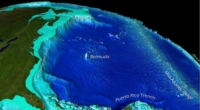Scientists have found a new method of seeing inside atomic nuclei by tracking interactions between particles of light and gluons, particles that hold together the building blocks of protons and neutrons. The quantum interference measurement is between dissimilar particles that strike meters apart in the STAR detector. Through a series of quantum fluctuations, the photons surrounding one speeding ion can interact with the gluons in the other, allowing for precise measurements of photon polarization and more accurate maps of the distribution of gluons. This discovery could lead to new ways of harnessing quantum entanglement. The research was conducted using the Relativistic Heavy Ion Collider (RHIC), and funding was provided by the Department of Energy Office of Science, Nuclear Physics program, the U.S. National Science Foundation, and a range of international agencies. The keywords for this article include quantum entanglement, gluons, photon polarization, interference patterns, and the Relativistic Heavy Ion Collider (RHIC).
New Discovery Allows Scientists to Peer Inside Atomic Nuclei
Nuclear physicists have found a groundbreaking way to see the arrangement of gluons and particles inside atomic nuclei by tracking the interactions between particles of light and gluons. This technique relies on a new type of quantum interference between dissimilar particles.
The Science
This new technique used by scientists allows them to track interactions between particles of light and gluons, the particles that hold together protons and neutrons, and the building blocks of atomic nuclei. By tracking how these entangled particles emerge from their interactions, scientists can map out the arrangement of gluons.
The Impact
The scale of this new discovery is at the level of femtometers, quadrillionths of a meter. This discovery could lead to new ways to harness quantum entanglement, and its potential impact is significant, as it allows for the understanding of how gluons build the structure of protons, neutrons, and atoms. Furthermore, this new technique could pave the way for more precise measurements of gluon distributions.
The Discovery
This discovery was made possible through the Relativistic Heavy Ion Collider (RHIC), which is a Department of Energy Office of Science user facility that accelerates and collides the nuclei of atoms, such as gold. These speeding nuclei are surrounded by a cloud of polarized photons, particles of light. Through quantum fluctuations, the photons surrounding one speeding ion can interact with the gluons in the other. By tracking the velocity and angles of certain particles that emerge from these interactions, scientists can measure photon polarization precisely, and therefore map out the distribution of gluons both along and perpendicular to the polarization direction.
Conclusion
This new discovery is similar to how positron emission tomography (PET) scans work but on a much smaller scale. It allows scientists to better understand the structure of protons, neutrons, and atoms, and to pave the way for new methods to harness quantum entanglement. This new technique is a breakthrough for nuclear physics and could have a significant impact on future scientific research.
Scientists Discover New Method of Measuring Photon Polarization
Scientists have discovered a new way to measure photon polarization by tracking two pions, one with a positive charge and the other with a negative charge. These particles are made up of the combined wavefunctions of particles emerging from a decay process that occurs inside each of the two nuclei. Interference patterns between the particles’ wavefunctions have shown that the oppositely charged particles striking the STAR detector at RHIC are entangled or in sync with one another. This experimental observation of interference between dissimilar particles has allowed scientists to measure the photon polarization and may lead to new ways of harnessing quantum entanglement.
Funding
This work was funded by the Department of Energy Office of Science, Nuclear Physics program, the U.S. National Science Foundation, and various international agencies listed in the published paper.
Don’t miss interesting posts on Famousbio










